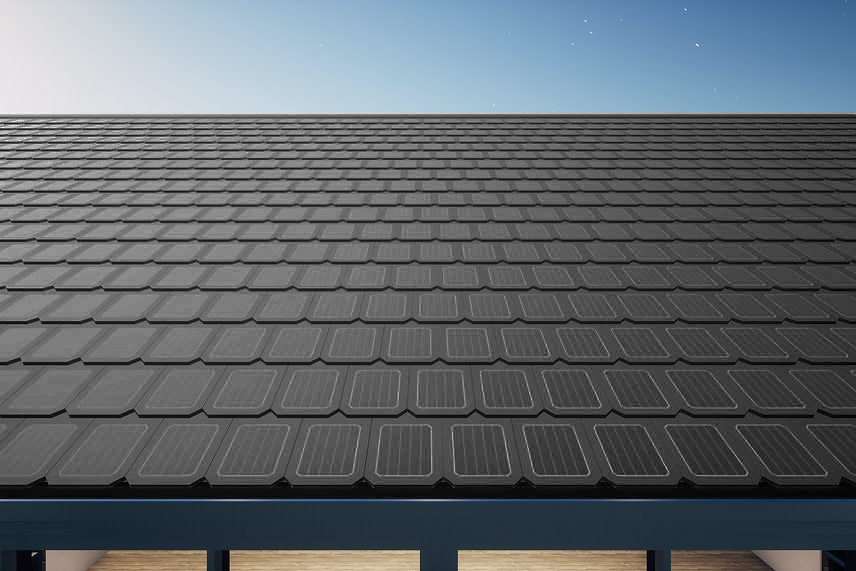Going solar is a good idea, and you may already know that. But, you might be holding back from getting solar panels now because you’re waiting for solar technology to get even better. But should you wait? When the Solaris team was asked this question, we all had the same overwhelming response. But Greg Virchick, one of our newest Project Developers, stated the perfect sentiment on this matter:

So, why does Greg feel so strongly about this topic? This blog post thoroughly explains why waiting to go solar is definitely not the smart move to make.
Dreaming of Futuristic Solar
It’s common to want the best of the best or the newest gadget on the market. But solar technology doesn’t typically get that much better from one year to the next. Smartphones and other electronics often advance much faster than solar panels do. For instance, solar panel efficiency rates increase ever so slightly over a number of years. You may have to wait years and years to get whatever it is you’re looking for.
If you search for solar panels online (especially on Google Images), you typically see three main types of solar panels:
1. Blue solar panels with visible framing and/or grid lines
These are usually outdated solar panels or they’re made in China or other areas less local to the United States. They often do not have high wattage or efficiency compared to newer or more premium solar panel models. Some blue solar panels are considered polycrystalline in their silicon structure, yielding lower energy production than monocrystalline solar panels.
2. All-black solar panels with no visible framing or grid lines
These are the modernized solar panels of 2025. These all-black modules usually blend into roofs well and foster strong curb appeal for the home. They are typically monocrystalline in silicon structure, meaning there is only one type of silicon used in the solar cells, resulting in greater solar panel performance and uniform aesthetics.
3. Futuristic, less-chosen, or irrelevant solar panel technologies
These technologies may look cool but you don’t see them often for a reason. Solar shingles, 600+ watt solar panels, ultra-thin bifacial solar panels, and others are on the market but are not suitable or relevant for most homeowners in New England.
 Should You Get “Futuristic” Solar Now?
Should You Get “Futuristic” Solar Now?
Greg and the rest of the Solaris team strongly believe that you should not wait to go solar. Current premium solar panels are around 400-480 watts per panel. If you are looking for even higher wattage than that, you will likely have to wait a number of years. 600-watt solar panels exist but only for commercial installations with enormous electrical usage. There is really no need for that high of wattage for most residential homeowners. All-black, premium, 440 watt solar panels in 2025 are high-performing and have good shade tolerance meaning that they produce energy even on cloudy days or near some trees (granted, you shouldn’t have so many trees or a massive tree on your property shading the main part of your roof). Today’s premium solar panels (offered by Solaris Renewables) can wipe out your electric bill and help you accrue net metering credits to use on any future bills.
Regarding more futuristic, “cooler,” solar technologies, they’re less common for a reason. It is the professional opinion of Greg and the rest of the Solaris team that solar shingles are “not ready yet” for mass market deployment like solar panels are because of their shorter warranties, longer return on investment (ROI), and less reliable technology. However, if you are still dreaming of purchasing more futuristic solar technology today such as solar shingles, please beware of the following:
- Though they qualify for the same tax incentives as traditional solar panels do, solar shingles are very costly technology with a slower financial return and payback period.
- Even though solar shingles are only present on part of your roof, you have to redo your entire roof to have most solar roofs or shingles. Installing solar shingles is a very serious process that involves intensive roof work, electrical work, and plenty more. With a solar roof or shingle technology, there are tons of pieces and moving parts, and certainly more room for error, than installing traditional solar panels.
- And because there’s more room for error during and after your solar shingle installation, you shouldn’t want just anyone installing or servicing your solar roof or shingles. Most solar professionals do not work on solar shingles, so it would be difficult to find a reputable installer when you need one.
- Most solar shingle installers and manufacturers do not offer long, comprehensive warranties compared to traditional solar panel warranties from reputable installers like Solaris.
Waiting For New Solar Tech Doesn't Make Sense
Even if more adequate solar shingles or 600-watt solar panels hit the residential market, should you wait to go solar? The short answer is no, and we will explain why.
Waiting for new technology to come out is usually a smart idea when purchasing other types of tech, but not solar. Most people can wait to buy that new gaming console, smartphone, or laptop, until it gets cheaper eventually or a new model comes out. However, most products are not money-saving devices like solar panels are. Solar has a solid return on investment, and is considered a money-saving device. For every month you wait to go solar, you’ll have another electric bill to pay for. And, like we mentioned previously, solar panels do not change and evolve as quickly or rapidly as other types of electronics do, so you’d likely have to wait some time to get what you’re looking for.
Most home improvement projects don't have a direct return on investment. They don’t pay for themselves by eliminating another bill. You take out a solar loan, then, automatically remove the liability of a high utility bill or an electric bill at all. When you hit the point when your solar panels paid for themselves, they've already served their purpose and you've hit your financial return, so you can still buy that next solar innovation later if you so choose. (However, we recommend using your solar panels for as long as you possibly can for environmental sustainability reasons and cost-effectiveness).
Waiting Also Means You’re Missing Financial Incentives
Your return on investment partly depends on the incentive programs present during the time of your solar installation. Historically, solar incentives have declined over the years because solar adoption has become more mainstream and incentives aren’t as needed as they used to be. That’s usually how financial incentives work within different policies; they are the strongest at first before much adoption of that thing or activity, and then once momentum kicks in, the incentives slowly decline over time.
Going solar now locks you into today’s robust utility incentive programs for 10 years, secures your 30% federal tax credit, and more. If you wait to go solar, the same great tax incentives may not be available by the time you install them. Most of our customers report that they wish they went solar long before they actually did!
Maximize Your Return on Investment
The best time to go solar was yesterday, but today is the second-best time. With electric rates rising outrageously all over New England, it is imperative that homeowners consider a different option. Go solar now to secure predictable and lower energy prices. Our professional team in Danvers, MA is available to help homeowners in Massachusetts, southern New Hampshire, and southern Maine. Reach out to us to schedule a free, zero-pressure solar consultation where you’ll meet one of our Project Developers (like Greg!) virtually or in-person to discuss your home and personal needs, energy costs, aesthetic concerns, our top-of-the-line solar products, incentives, pricing, and more.
Go Solar With A Trusted Installer
Interested in learning more about how solar panels would work for you? Our team can answer any question you have about going green with a local solar contractor. We are your local experts in the solar energy industry!